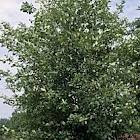This skullcap is also called Blue Skullcap, Mad Dog Skullcap, as it was believed that it could cure rabies, and American Mint. It is in fact in the mint family or Labiatiae or Lamiaceae family. This means that it is a relative of calamint, sage, Jupiter’s sage, peppermint, horehound, self-heal, the chaste tree and the small-flowered Chaste tree, ground ivy, the teak tree, yellow, purple and white dead nettles, motherwort, fragrant premna, common germander, Cretan dittany, bugle, Scarlet Bee Balm and marsh woundwort, to name just a few of its relatives. It is a native of North America , and a synonym for the genus is Cassida lateriflora (L) Moench.
The flowers of this plant actually look a little like those of a foxglove or perhaps a snapdragon, but smaller than those of either. These are in bloom between June and August while the seeds ripen from July to September. The plant grows to heights of around two feet, and has a spread of a little over a foot.
The herb is used as a nervine, or a stress reliever on both sides of the Atlantic , but very little research has been done into its properties. It is primarily used for nervousness and stress and is taken in the form of an infusion or tisane, combined sometimes with lemon balm (Melissa officinalis), to take away the bitterness of skullcap.
 Native Americans used this herb extensively for a variety of purposes. It was employed by shamans as it produces visions and also it is a medicinal herb. An infusion was used to promote and stimulate the menstrual flow so it should not be used by pregnant women. It was used as a tonic for the central nervous system and the leaves have antispasmodic properties are slightly astringent and diuretic. These are harvested in early summer and dried for later use. They have been used to treat epilepsy, neuralgia, insomnia, anxiety, delirium tremens, and more recently to help with withdrawal from barbiturates and tranquillizers.
Native Americans used this herb extensively for a variety of purposes. It was employed by shamans as it produces visions and also it is a medicinal herb. An infusion was used to promote and stimulate the menstrual flow so it should not be used by pregnant women. It was used as a tonic for the central nervous system and the leaves have antispasmodic properties are slightly astringent and diuretic. These are harvested in early summer and dried for later use. They have been used to treat epilepsy, neuralgia, insomnia, anxiety, delirium tremens, and more recently to help with withdrawal from barbiturates and tranquillizers.  The tisane or infusion was used for breast pains, and to expel the placenta after childbirth. If you take too much of the herb, you will suffer from nausea, dizziness, confusion and involuntary twitching.
The tisane or infusion was used for breast pains, and to expel the placenta after childbirth. If you take too much of the herb, you will suffer from nausea, dizziness, confusion and involuntary twitching. It has been used to treat Attention Deficit Disorder and as a mild sedative, although very little research has been carried out to confirm or deny how effective it actually is. What research has been done seems to indicate that it might be useful for diabetes patients, Kuroda, M. et al (2012) “Chemical constituents of the aerial parts of Scutellaria lateriflora and their alpha-glucosidase inhibitory activities”
An earlier study published in Phytomedicine, 2009 May Vol.16 (3) pp 485-493, Zhang Z et al. “Characterization of chemical ingredients and anticonvulsant activity of American skullcap” seemed to vindicate the use of skullcap as an anti-spasmodic for epilepsy.
However, clearly more research is needed into skullcap and its properties so that we understand how and why it is effective for some ailments.





























